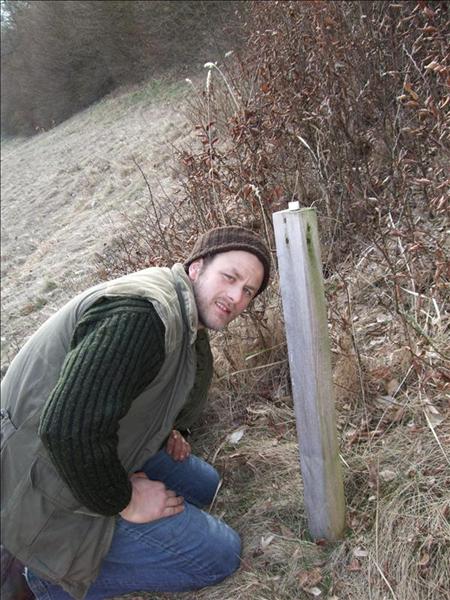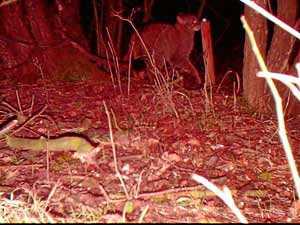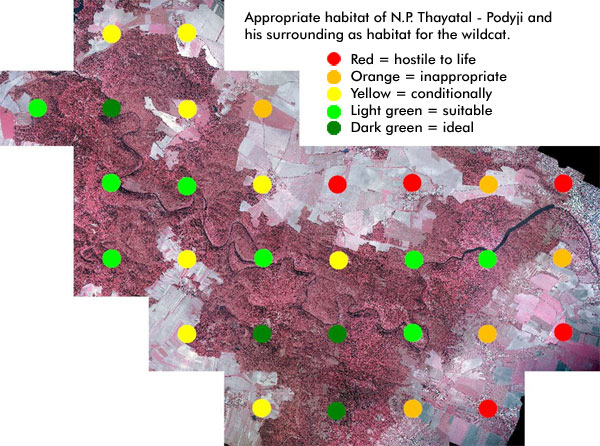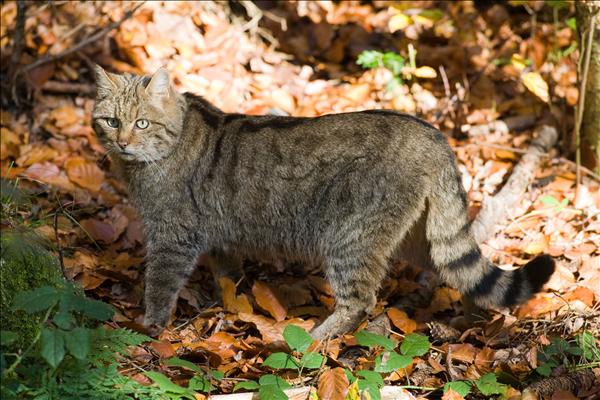Lure Sticks method in the National Park Thayatal
Lure sticks are set up based on the evaluation of the potential habitats. In preparation, the involved staff had to undergo training on material and choice of micro-locations. They use rough stakes on which valerian baits are fixed. Wildcats love that smell and rub themselves against the rough wood. The hairs left on it are collected once a week during the mating season (January to April) and undergo a genetic analysis.






